How whey became a billioneuro business
LOOKING AHEAD: A strong future for dairy


How whey became a billioneuro business
LOOKING AHEAD: A strong future for dairy

as a cross-border cooperative
4
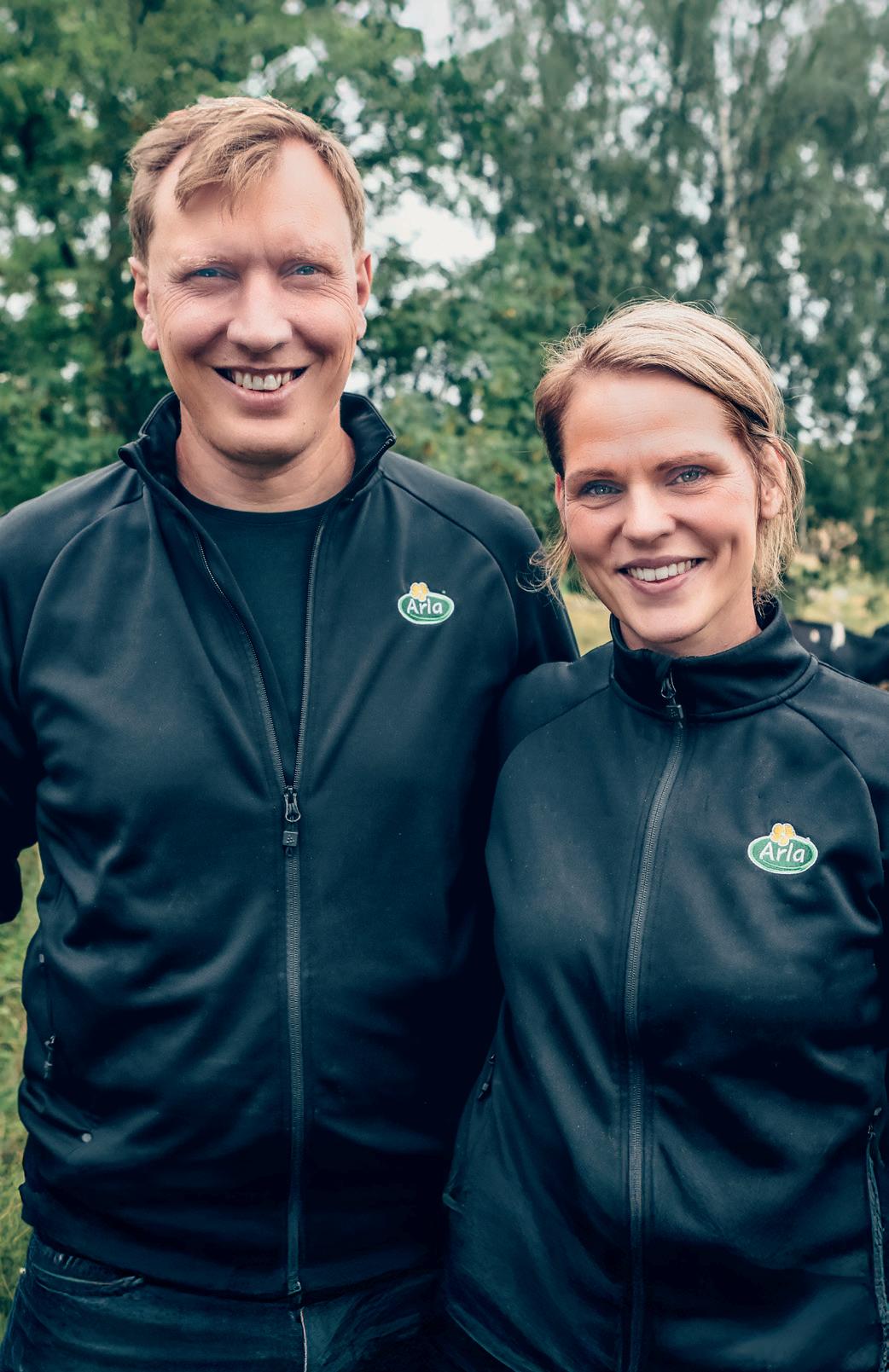
Voice of Arla farmers: “We can be proud of going the extra mile”

8
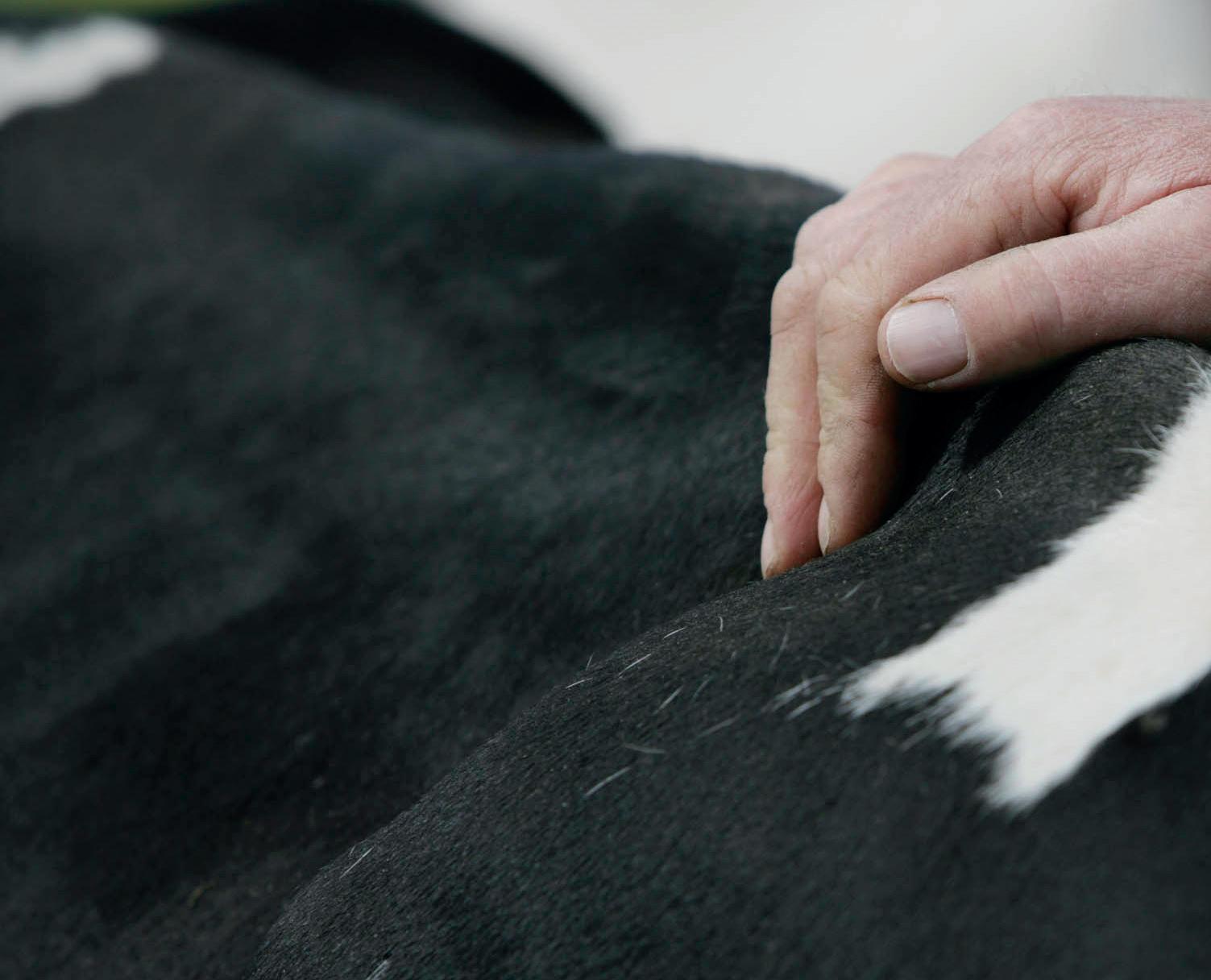
A brief history: 25 years as a cross-border cooperative
12
Half-year results: Solid performance in a volatile market

Looking ahead: A strong future for dairy


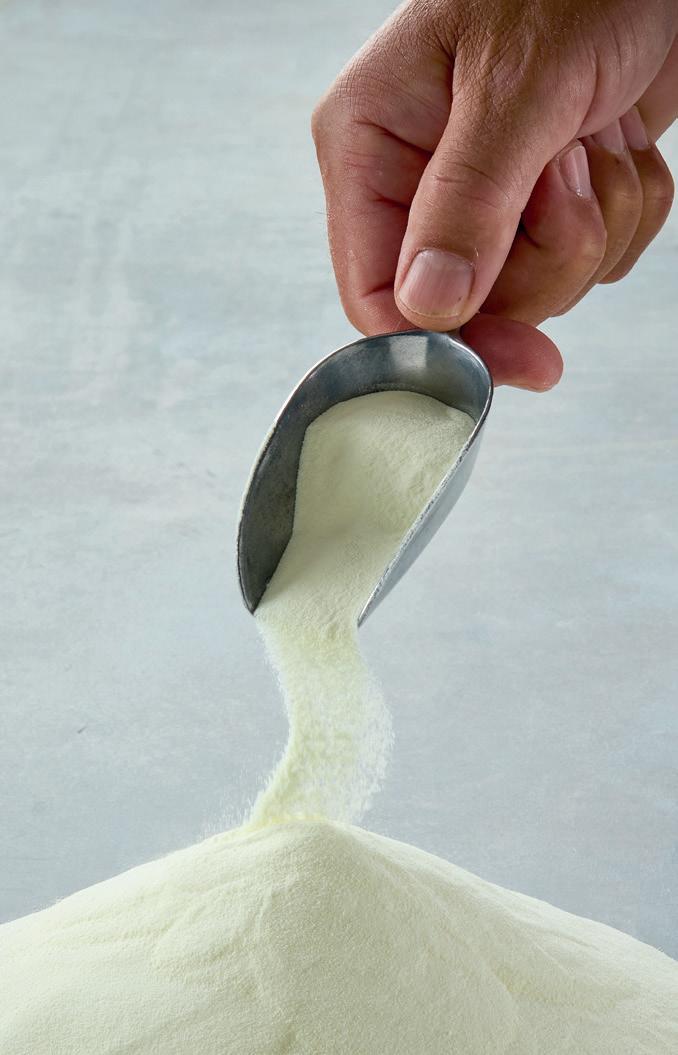
18 Making the most of whey
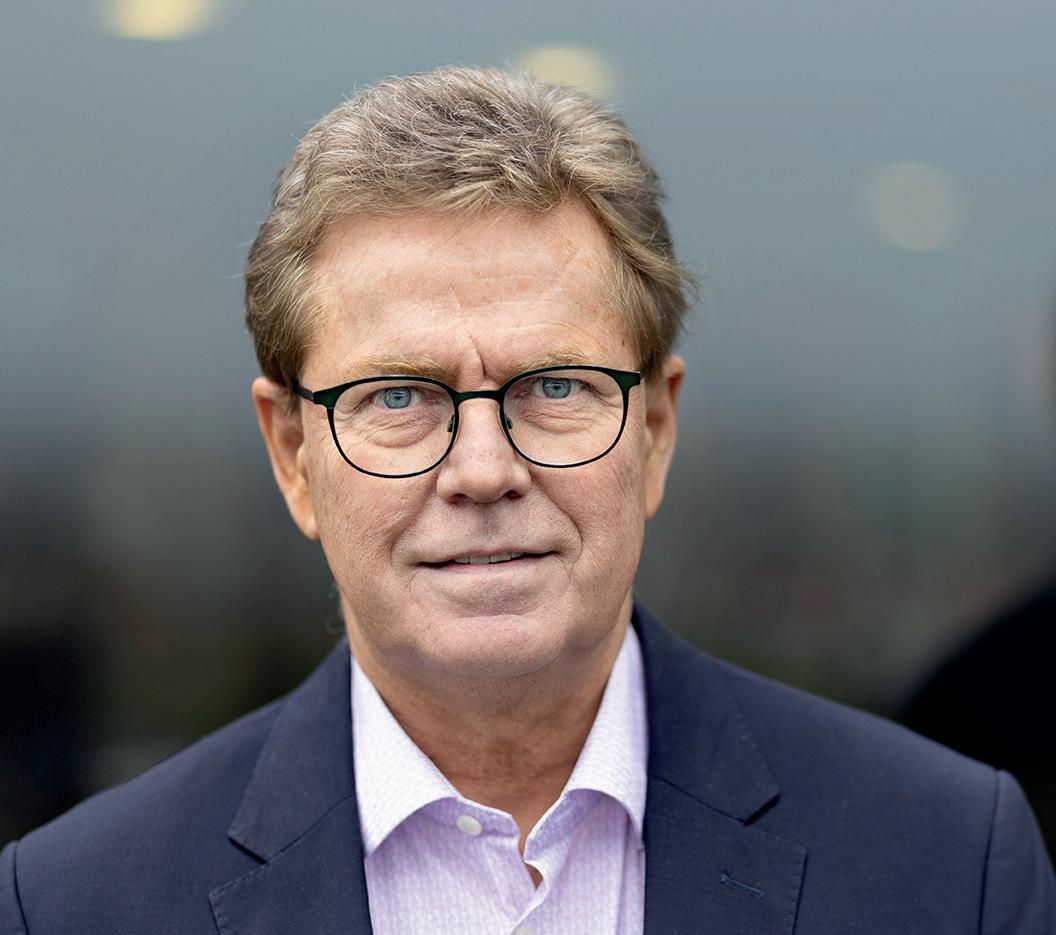
Welcome to the new edition of Inside Arla – where we celebrate the 25-year anniversary of Arla becoming a crossborder cooperative.
A quarter of a century of coming together across countries, building an international, diverse and resilient company rooted in local cooperative values. This strong position is also reflected in Arla’s solid performance in the first six months of the year – you can find the highlights from the financial results here in the magazine.
Over the past 25 years, we have crossed many milestones – and looking ahead, the merger with DMK Group has the potential to be another defining moment in our cooperative journey.
is the magazine for Arla’s owners about your company. It is published in six languages and printed on FSC certified paper. For online version visit www.arla.com
Publisher: Arla Foods amba, Sønderhøj 14, 8260 Viby, DK. Print: Stibo Complete. If you do not want to receive a printed version, let us know at insidearla@arlafoods.com
The strong support from the Boards of Representatives reflects a shared belief in the benefits of coming together. Pending approval from the relevant authorities, the merger means joining forces to accelerate innovation, deliver nutritious products to more people, and continue to support a strong milk price for you–our farmer owners.
Thank you for being part of the journey. I hope you enjoy the read.
PEDER TUBORGH CEO
Christian Højgaard Weigelt Arla farmer owner, Denmark
“With cooperative members in seven countries, we have different perspectives and starting points. While that can be a challenge, diversity is a strength – the fact that we can influence each other also across borders as we work towards a common goal, and I am proud of the community we have. Personally, I have been part of the regenerative development work, where I believe Arla has been at the forefront and forward-thinking, and it has been a very inspiring journey for me.”

Farmer owners across seven countries – and employees in many more – form the backbone of Arla. As we mark 25 years as a cross-border cooperative, we asked some of them what makes Arla special.

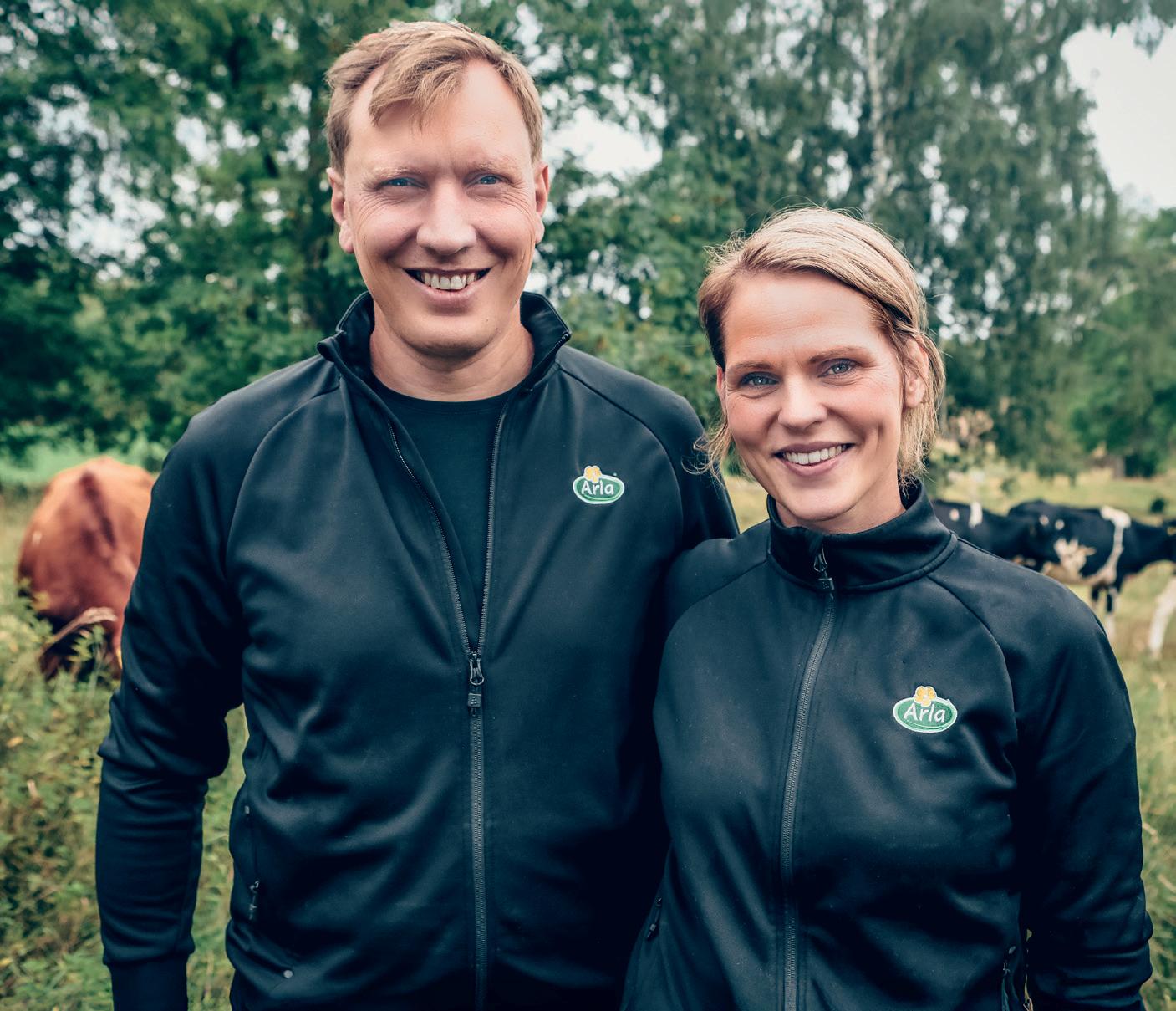
“At Arla, we always go the extra mile when it comes to animal welfare and sustainability. That is something we can all be proud of. It makes our milk worth a bit more – and it makes Arla more competitive in the long run.”
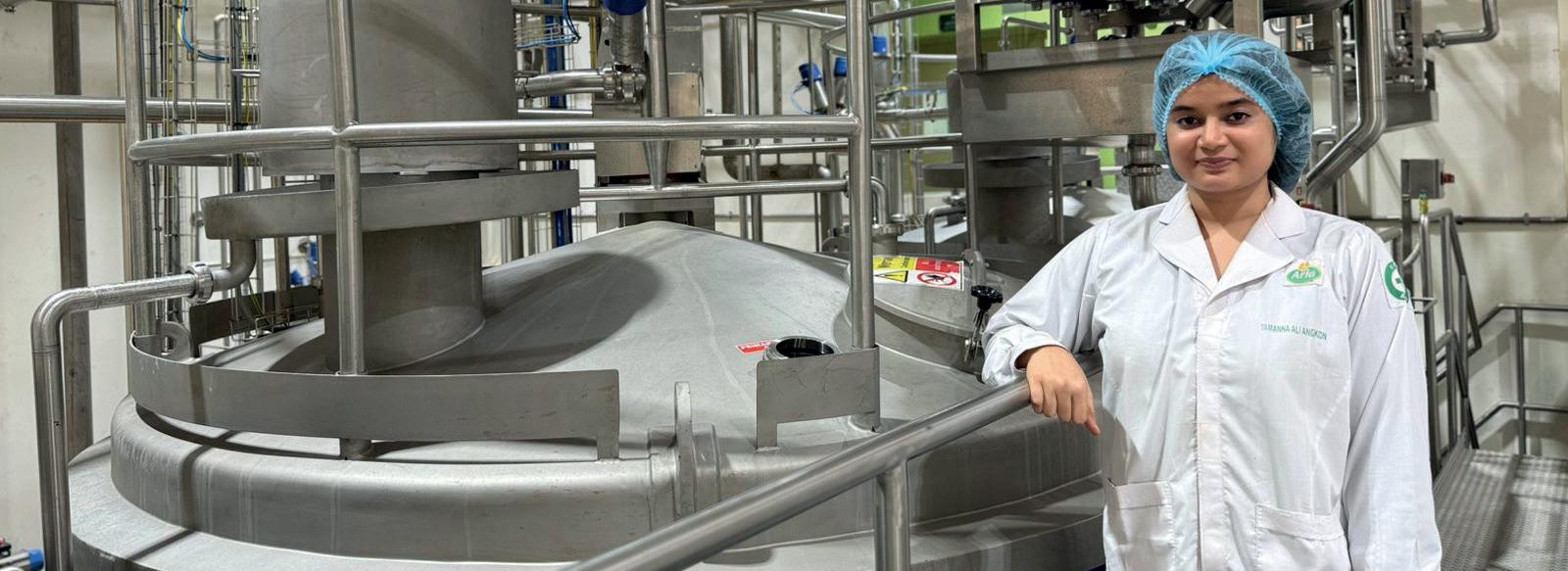
Tamanna Ali Angkon Production Optimisation Coordinator, Bangladesh
“Arla is a great place to work, known for being a safe environment to work in with an inclusive culture, especially for women.”
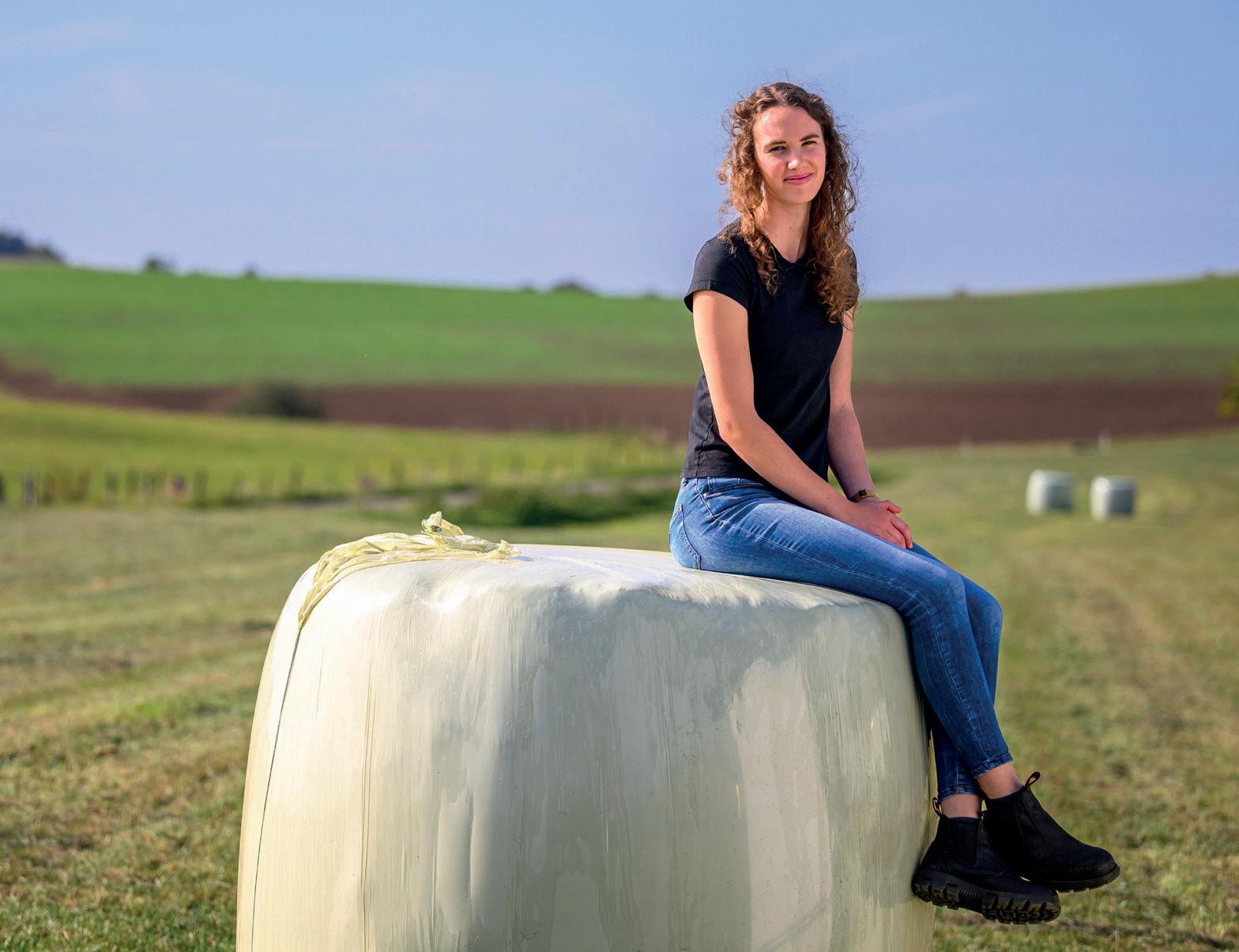
Luisa Marina Dahmen Farmer owner, Germany
“For me, Arla means shaping the dairy industry – and doing it together.”
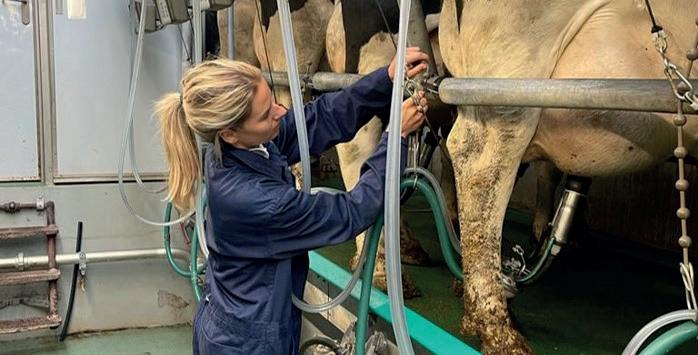
Marjolein ter Laak
Communications Specialist, the Netherlands
“Working at Arla means contributing to a world where nature and nutrition go hand in hand. That’s a message I’m proud to share!”

Simon Josefsson Team Leader, Kalmar, Sweden
“At Arla, we say we are closer to nature. To me, that means working with a natural food and tradition, while driving development and working with new ideas.”

Harald Kurz Senior Key Account Manager Foodservice Wholesaler
“I like Arla because we sell excellent food service products made from the precious milk of our farmers.”

Marc Vaessen Farmer owner, Luxemburg
“For me, Arla combines tradition and innovation in terms of adding value to our milk. Even though sustainable milk production demands a lot from us, as a member of Arla, I encourage my children to pursue a career as milk producers with pride and confidence.”

Vincent Brandt Farmer owner, Belgium
“We can be proud of the way we work together and our efforts towards greater sustainability. While Arla is a demanding partner, it is also one that offers offers strong development prospects.”

Zara Dorrington Arla farmer owner, UK
“I’m so proud to be an Arla farmer because of the high standards we uphold within the industry and Arla’s ability to advocate for that through its fantastic brands and great products that it is able to turn our milk into.”
Swedish Arla and Danish MD Foods merge, becoming the world’s first cross-border dairy cooperative, owned by farmers in the two countries. At the time, Arla accounts for 65 % of milk production in Sweden, MD Foods for 90 % in Denmark.
From mergers to new products, we take a look at some of the key moments from the past quarter of a century.
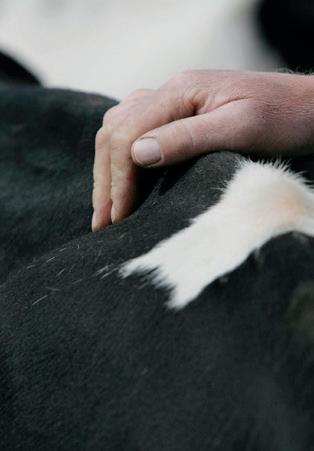
We introduce the farm management programme Arlagården, a shared set of principles to ensure milk quality, animal welfare and care for the climate, the environment and the people working on Arla farms.
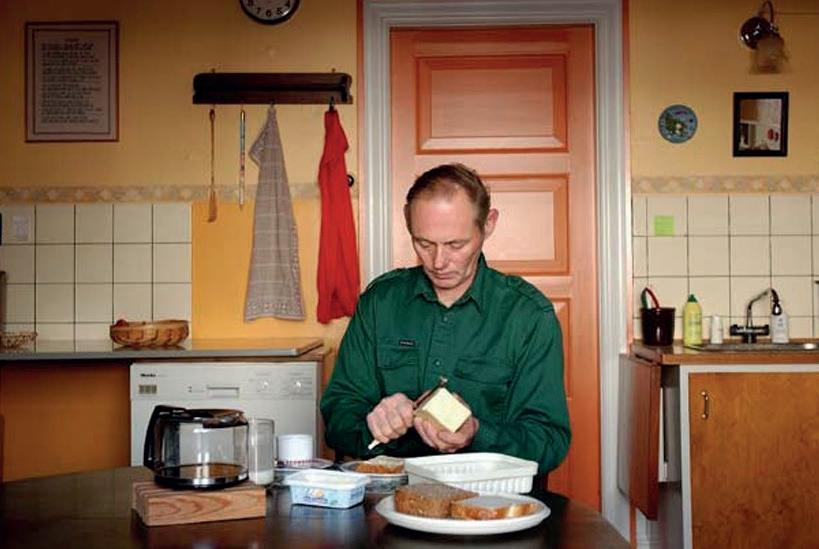
Arla buys the privately owned Dairy, Tholstrup Cheese, adding the Castello brand to Arla. Later the same year, Arla announces the purchase of the privately owned Finnish dairy Ingman Foods Oy Ab.
Arla merges with Express Dairies in the UK, creating the UK’s leading supplier of dairy products under the name of Arla Foods UK plc.
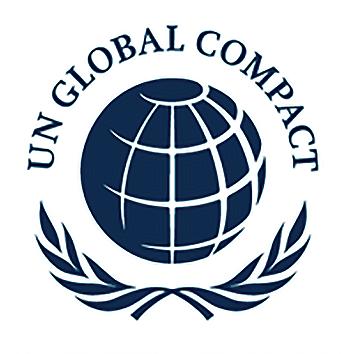
Arla signs up to Global Compact, the UN initiative to promote ethical business practices. The same year, we publish – for the first time – a group report.

Arla acquires the Dutch dairy Friesland Fresh Food in Nijkerk, giving access to a new market in northern Europe, where Arla is today one of the leading players in liquid milk.

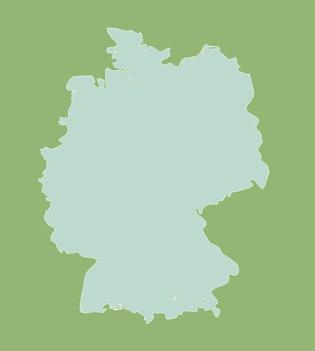
German cooperative Hansa-Milch eG merges with Arla, adding 670 German farmers to the cooperative ownership of Arla. The same year, EU’s competition authorities gave the go-ahead for Arla Foods’ acquisition of AllgäulandKäsereien in Southern Germany. 2011 is also the year of the merger of Swedish Milko and Arla.

Arla merges with the German dairy company Milchunion Hocheifel MUH and British Milklink. The mergers mean that Arla grows from 8,024 cooperative owners in Denmark, Sweden and Germany to 12,300 cooperative owners in Denmark, Sweden, Germany, Belgium, Luxembourg and the UK.
The Arla Protein brand is launched in Finland. Created to “naturally fuel the active lifestyles” of everyday athletes, the brand now spans 28 markets and generates over EUR 130 million in net revenue. In 2024 alone, revenue grew by 36%.

Arla opens the fresh-milk dairy in Aylesbury in the UK, the largest and most effective of its kind in the world. The dairy has the potential to process one billion litres a year, supplied by around 900 British farmers.
1,300 British AMCo members start to deliver milk to Arla as owners.
The same year, the Board of Directors propose a merger with the Belgian cooperative EGM Walhorn with 800 owners.


Arla Foods Ingredients enters a joint venture with German cooperative Deutsches Milchkontor (DMK). As the demand for whey products increase, a major investment plan is agreed to expand the whey processing plant in Denmark and establish a new one in Germany.

Production starts in Falkenberg, Sweden – what is today the biggest cottage cheese plant in Europe. In 2024, the dairy turned around 120 million kg of milk into 22,500 tons of cheese.
Arla’s Global Innovation Centre in Aarhus, Denmark officially opens –a state-of-the-art facility dedicated to developing future dairy products and advancing research in nutrition, packaging, and sustainable technologies. Swedish cooperative Gefleortens merges with Arla.

Arla launches the Calcium transformation programme to drive cost savings and improve efficiency across the business – supporting long-term competitiveness and reinvestment in growth.
Arla acquires Mondeléz International’s Middle East and Africa branded cheese business.
Arla launches our long-term climate ambition to reduce emissions by 30% per kilo of milk by 2030 and reach carbon net zero by 2050—driven by a commitment to protect nature, meet growing consumer expectations, and ensure that dairy continues to be part of a sustainable future.
The first Climate Checks (today FarmAhead™ Check) are carried out to, identifying where on-farm emissions come from, benchmark performance, and take targeted action.
* The merger is now pending the approval from relevant authorities.

As COVID-19 sweeps across the globe, Arla has to adapt swiftly by reshaping operations to meet surging home consumption, implementing strict health protocols, and ensuring continuity in dairy supply.
Arla Foods Ingredients opens a new, state-ofthe-art innovation centre in Denmark spanning 9,000 square metres to develop new ways in specialised dairy and whey ingredients.
With Arla’s largest ever investment in a single site, the production plant at Pronsfeld dairy in Germany is expanded – a key driver in meeting the growing international demand for sustainable, affordable and nutritious dairy products.


For the first time, farmer owners in Arla receive a monthly sustainability incentive on their milk price, rewarding climate activities and other sustainability efforts being made on farm. The ground-breaking FarmAhead™ Incentive uses a data-driven and science-based points system to support an encourage the transition to more sustainable dairy farming.
Arla Foods Ingredients’ acquire the whey nutrition business from Volac International Limited and its production facility in Felinfach, Wales. The acquisition expands Arla’s capacity for the production of whey protein for the performance nutrition market, and functional whey protein and lactose for the food industry.
The Boards of Representatives in Arla and DMK vote in favor of the proposed merger that would make Arla the strongest dairy cooperative in Europe. “The approval confirms our shared belief that Arla and DMK Group are stronger together. By combining our complementary strengths, we can secure a more sustainable and innovative dairy sector for the future, while continuing to deliver value to owners and partners,” says Chair Jan Toft Nørgaard.

“ The results show the strength of Arla and our cooperative model.”
Dahl Nyholm
We have asked Arla’s CFO Torben Dahl Nyholm to share what he sees as the main highlights from the half-year financial results.
RESULTS IN LINE WITH EXPECTATIONS AND COMPETITIVE PERFORMANCE PRICE
“The overall headline is that in a volatile market, we delivered results in line with our expectations. That means we have been able to deliver a competitive performance price of 57.5 eurocent– as well as a paying a halfyear supplementary payment of 1 EURcent/kg milk based on the half-year milk volumes. The results show the strength of Arla and our cooperative model – and were boosted in particular by exceptional performance in Arla Foods Ingredients.”
OUR BRANDS ARE IMPACTED BY CHALLENGING MARKET CONDITIONS
“As we expected, the market conditions were challenging in the first half of year – with high commodity prices and geopolitical uncertainty due the war in Ukraine, conflicts in the Middle East as well as unpredictable tariff and trade measures from the US. This made consumers more cautious, which impacted our brands. In volumes, they were down 1.5 % compared to the first half of last year, however, we expect to
be close to neutral in terms of branded growth for the full year.”
WE ARE INVESTING IN ARLA’S FUTURE
“We have made several major investment decisions in the first half of the year; in UHT milk production in Lockerbie in the UK, an expansion of cream cheese production capacity in Holstebro in Denmark, in Linköping in Sweden to meet rising demand for Skyr products, as well as an expansion of our cheese-in-glass-jar production capacity in Bahrain. This high level of investment – expected to be 650–700 million euro for the full year – shows our commitment to future growth, capacity expansion, and innovation across our business.”

Arla’s operations are split into four commercial segments. Here’s how they performed in the first half of the year.
In our Europe zone, revenue increased by 10.9% to EUR 4,267 million. This was mainly driven by higher price levels, as retail and foodservice prices rose as a result of increasing commodity prices, particularly in the fourth quarter of 2024 and the first quarter of 2025.
In our International zone, revenue grew by 0.9% to EUR 1,206 million, despite a negative impact on revenue from currency developments, mainly the US dollar. The revenue growth was due to higher price levels, with an additional contribution from volume-driven growth of 0.4%.
ARLA FOODS INGREDIENTS
Revenue in AFI was up by 53.7% to EUR 726 million in the first half of 2025. This increase was fuelled by our acquisition and impactful integration of the Volac Whey Nutrition business, high market prices for both commodities and valueadded products, as well as strong demand for dairy proteins.
GLOBAL INDUSTRY SALES
In the first half of 2025, revenue rose by 14.8% to EUR 1,255 million. This growth was mainly a result of higher trading volumes, which were prompted by lower retail demand in our Europe and International zones, combined with increased milk intake from our farmer-owners following the higher price levels paid.
In the second half of 2025, we expect uncertainty in the dairy market to continue, following increases in global production and recently softened commodity dairy prices. However, we are confident in our ability to demonstrate resilience and are raising our full-year expectations for growth and efficiencies.
1 As announced in the Annual Report 2024.
2 Leverage adjusted for the temporary effect of M&As in the year was 2.9.
3 Excluding the effect of potential new M&As.
Do you want to read more details about our financial results? Scan the code here to
find it on arla.com.
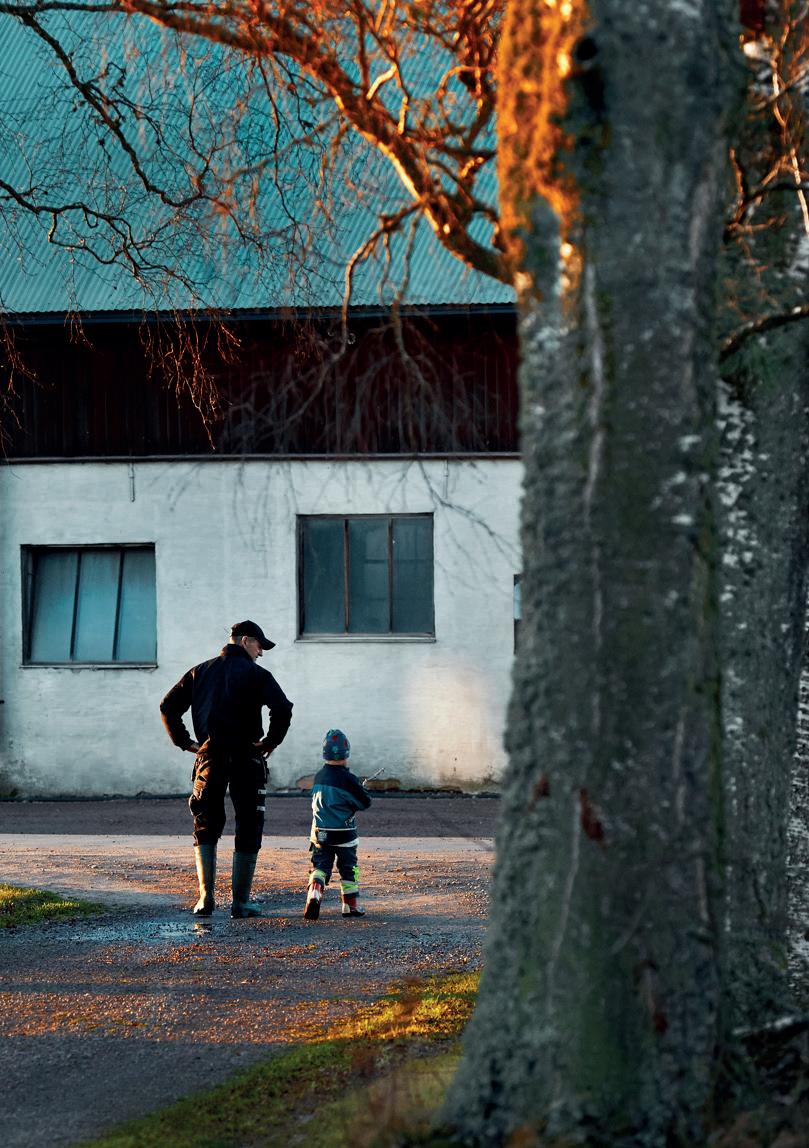

With the global appetite for dairy increasing, the future holds several opportunities for growth
What are the key trends that are shaping the global market for dairy - and how is Arla positioned to make the most of them? As we celebrate Arla’s history, we asked Arla’s Chief Marketing Officer Patrik Hansson and Vice President of Innovation Sandra Irene Jørgensen to look ahead at the opportunities that lie ahead.
“Fundamentally, as the global population grows, so does the need for high-quality protein. With its many nutritional qualities, dairy has a strong future – and Arla is in a good position to make the most of that potential,“ says Patrik Hansson. Part of Arla’s executive management team, he heads Marketing & Innovation globally – and sees Arla’s ability to adapt and capture new opportunities as a key strength of the cooperative.
“Innovation has been the DNA of Arla for many years – a heritage we can be proud of and which has brought us to where we are today. This ability to innovate is key to valuing up the milk to ultimately return as much as possible to our owners. We have done that across many parts of the business through our history. From the work with whey in Arla Foods Ingredients, to creating new butter spreads and more recently tapping into a growing market segment with the Arla Protein brand,” says Patrik Hansson.
Through his 15-year career with Arla, the Swedish national has headed Arla’s South East Asia business, has been Managing Director of Arla in Sweden and Germany. He sees a growing awareness of the unique nutritional properties of dairy.

“At a time where the debate about ultra-processed food is picking up, there is a greater appreciation and understanding of the naturalness and nutritional qualities of dairy. This is also reflected in the nutritional guidance in a number of countries,” he says.
While overall dairy consumption is set to increase, some categories are expected to grow more than other. And generally, changing eating preferences and habits are opening new opportunities to Arla, explains Sandra Irene Jørgensen, Vice President of Innovation.
More meals consumed on the go as one section of the market where Arla’ products are already moving fast. A growing focus on health is another key trend.
“Many consumers are becoming more knowledgeable about their diet and want to take better care of


themselves – and Arla is in a great position to help people eat well,” says Sandra Irene Jørgensen.
She points to innovations in products that can help consumers manage weight or build muscle in connection with workouts workouts and sport – all categories that will have a bigger share of the market in the future.
Another growth area is gut health, she explains.
“We are understanding more and more of how much a healthy gut is impacting our overall health – and the benefits of fermented dairy to support this improve immunity, cognitive health and mere. In Arla, we can build on our long history in this area to deliver this natural goodness,” she says.
One example already on supermarket shelves in some countries is the gut-health brand Arla Cultura, introduced for the first time to the UK market this September.
“We are understanding more and more of how much a healthy gut is impacting our overall health.”
Sandra Irene Jørgensen
Patrik Hansson also points a continued focus on sustainability as crucial to commercial success.
“Quite simply, being the leader on the climate journey helps us build stronger relationships with our customers. This will only become more important for us to be competitive in the future. We need to show that we are dedicated and continue to improve, step by step in our company operations and on farm,” he says.
“When talking about the goodness and naturalness of dairy, part of that story is that we are producing our products in a sustainable way – that we are feeding life and supporting both stronger people and a stronger planet.”
From humble beginnings, Arla Foods Ingredients (AFI) has grown into a billion-euro business. We take a look at the history – and rapid growth – of Arla’s whey ingredients business.
“We were the little brother that needed to prove ourselves and make a profit out of something that had not previously been valued,” says Associate Director and Strategic Innovation Advisor Anders Steen Jørgensen, summing up the earlier days of AFI. Having worked in the company since 1988, he remembers a time when the use of whey from cheese production was much less advanced that today.
But the pioneering spirit was strong – even back when the research department consisted of only three people in an office.
“There were no templates for how to do things. So, there was a feeling of “let’s invent the future together,” he says.
And in many ways, they did.
Since then, AFI a fully owned subsidiary of Arla, has grown to a billion-euro business. Today supplying whey-based ingredients to a number of industries – including early life nutrition, medical nutrition, sports nutrition, dairy applications and many more.

A long line of technological breakthroughs has enabled that development. Among the first was “ultrafiltration”, which from the 80s onwards made it possible to make products much purer in protein, opening a new market for using whey as a functional ingredient in food.
That remains the overall ambition, explains Luis Cubel, Group Vice President and Head of AFI.
“Simply put, it is about expanding on the science of nutrition, match the specific needs of each segment we are serving and finding the best way to apply whey proteins in various foods while making them convenient to digest,“ he says.
Today, that task lies in the hands of the scientists at AFI’s research and development department, including the state-of-the-art innovation centre that was opened in Denmark in 2021.
Here, AFI’s experts extract the right elements to match the needs of each final consumer group – from supporting the development of babies through early life nutrition to reducing the recovery time of patients with special medical needs.
The rapid uptake in the use of weightloss medicine like Ozempic and Wegovy is helping drive the demand for AFI products. With around 10% of the US population on prescribed weight-loss medicine, the need for protein-rich products is on the rise.
“When you lose weight quickly, you need something that supports the regrowth of your muscle mass – and doctors prescribing the medicine often recommend dairy proteins as the very best type of nutrition,” says Luis Cubel.

Arla Foods Ingredients’ products are used in a range of products:
• Early life nutrition – ingredients for infant formula manufacturers
• Sports nutrition – proteins that supports endurance, greater muscle protein synthesis and faster recovery
• Medical nutrition – helping patients recover from illness or post-operation
• Health foods – ingredients that support natural well-being, bone health, brain and cognitive health and more
• As ingredients in dairy and bakery goods
”It is about expanding on the science of nutrition.” Luis Cubel

This sets high demands on the milk used in AFI’s production.
“Many of our ingredients end up with vulnerable consumers, and that makes it very important that we have the right quality milk coming in through the cheese production. One of the keys to our success has been the ownership by Arla and the connection to the owners who deliver the milk,” says Luis Cubel.
“The Arlagården programme has meant that the owner milk delivered is of high quality – and it has been a question of keeping that quality well-preserved through our system. This closeness to the farmers is a key selling point and a fundamental part of the leading position we have in the market.”

The global market for whey-based ingredients’ is growing, and while products for specialised nutrition remain important, AFI’s product offerings for more mainstream products are gaining traction fast:
“Consumers in general are more aware of what they eat, and the market for sports nutrition and applying our products in regular dairy products is seeing 10-12% growth rates per year. So with the investments we have made in the last couple of years combined with a strong demand globally across a number of categories and applications, there is an exciting future ahead.”
Did you know?
While Arla Foods and DMK Group await approval of the proposed merger, the two companies have long collaborated in the whey ingredients business through the joint venture project ArNoCo, which processes whey from DMK’s cheese production into highquality whey protein concentrate and lactose for AFI global whey ingredients business.
Learn more about AFI’s journey on Arla Farmers –listen to the podcast here


Arla Foods Ingredients has seen a boost in revenue compared to previous years. In the first half of the 2025, revenue was up by 53.7% compared to the year before – from 473 to 726 million euro. The increase was fueled by the acquisition and integration of the Volac Whey Nutrition business, high market prices as well as strong demand for whey proteins.
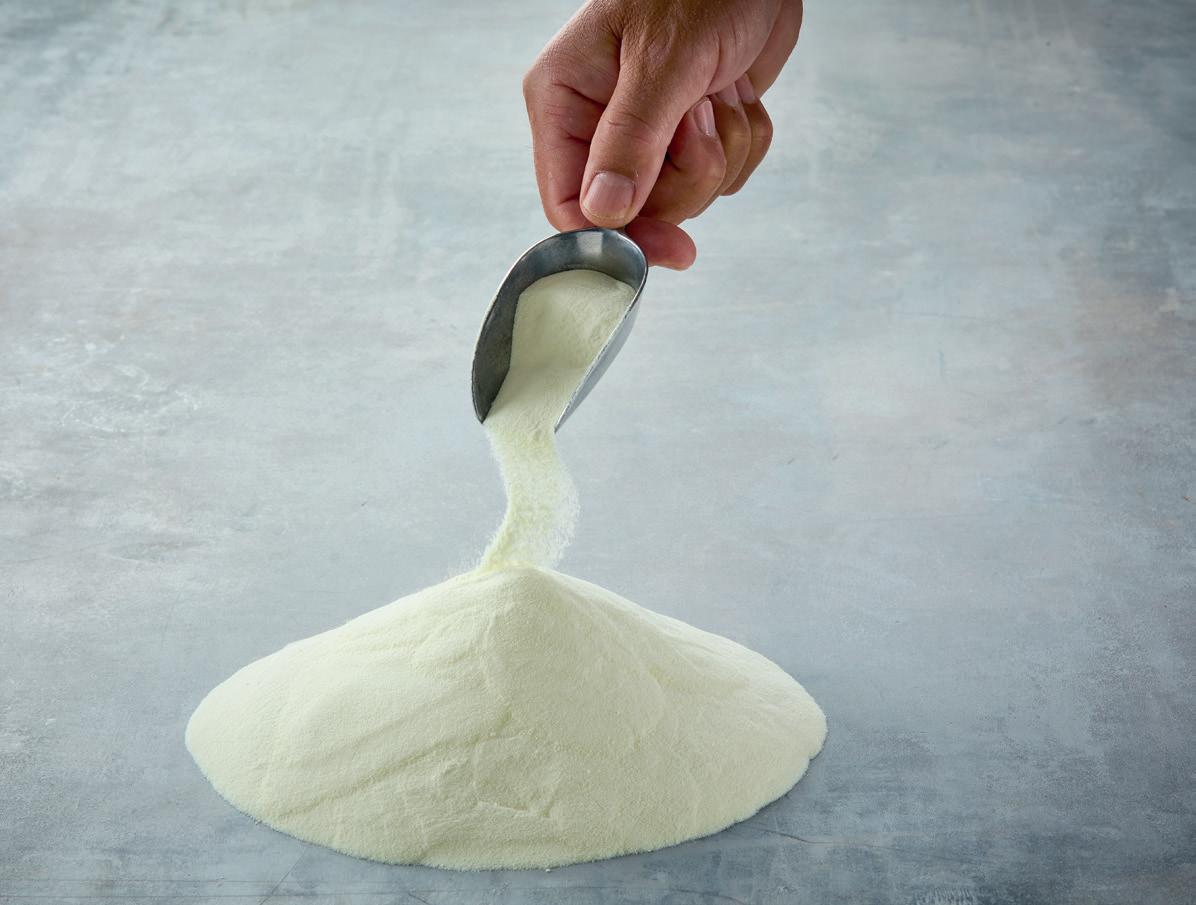
1976
The first pilot production of whey proteins take place in the cellar of the HOCO milk powder plant in Holstebro, Denmark.
1980
Danmark Protein inaugurates the world’s largest factory for the production of whey protein concentrate and milk sugar. Domestic and international sales rapidly take off.
2000
Arla and MD Foods merge –and MD Foods Ingredients becomes Arla Foods Ingredients.
2009
Arla Foods Ingredients opens a new, sophisticated application centre in Denmark, one of the largest in the world.
2014
New lactose plant opens. A premium, high purity ingredient, AFI’s dry-blend lactose meets the rigorous quality demands of the infant formula industry.
2021
A new Innovation Centre opens in Denmark. The same year, a new spray tower comes into operation at Danmark Protein.
1994 Danish dairy cooperative MD Foods acquires Danmark Protein, which becomes part of MD Foods Ingredients, the division responsible for sales of milk/ whey powder.
2012 Major plant expansion, doubling the capacity of the whey processing facility in Denmark to one of the biggest in Europe.
2024
Arla acquires Volac’s Whey Nutrition business and operations in Felinfach, Wales.
Enclosed with this issue of Inside Arla is a poster, celebrating our history as a cross-border cooperative.
We hope that you want to put it on your wall. And that you are proud of how you and other Arla farmers, employees (and cows of course) have built Arla – one of the world’s strongest dairy companies – together!

































































